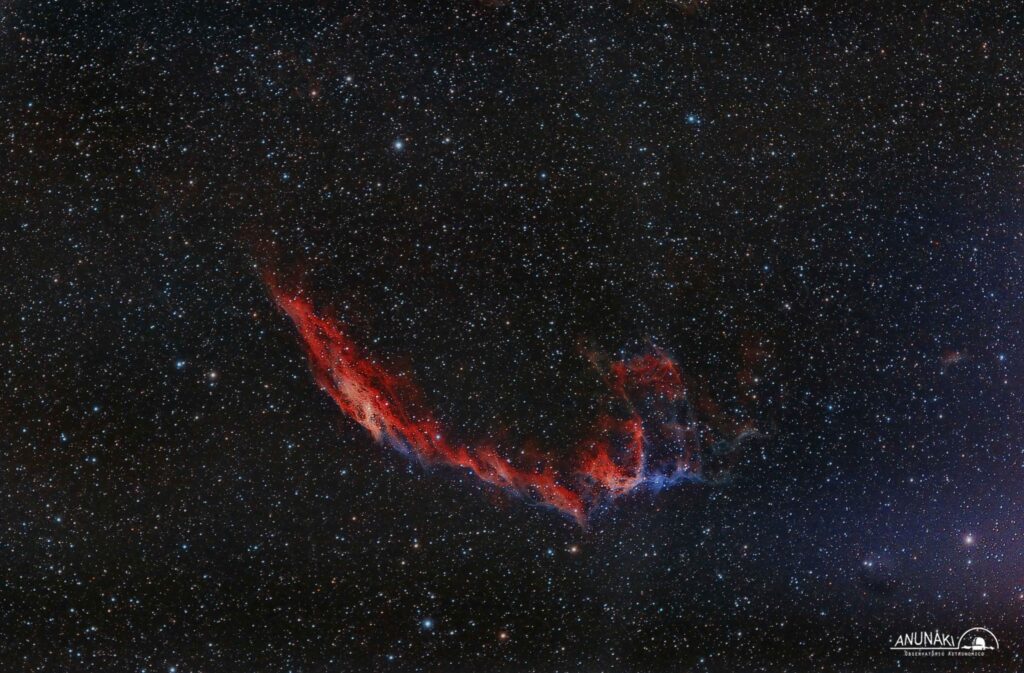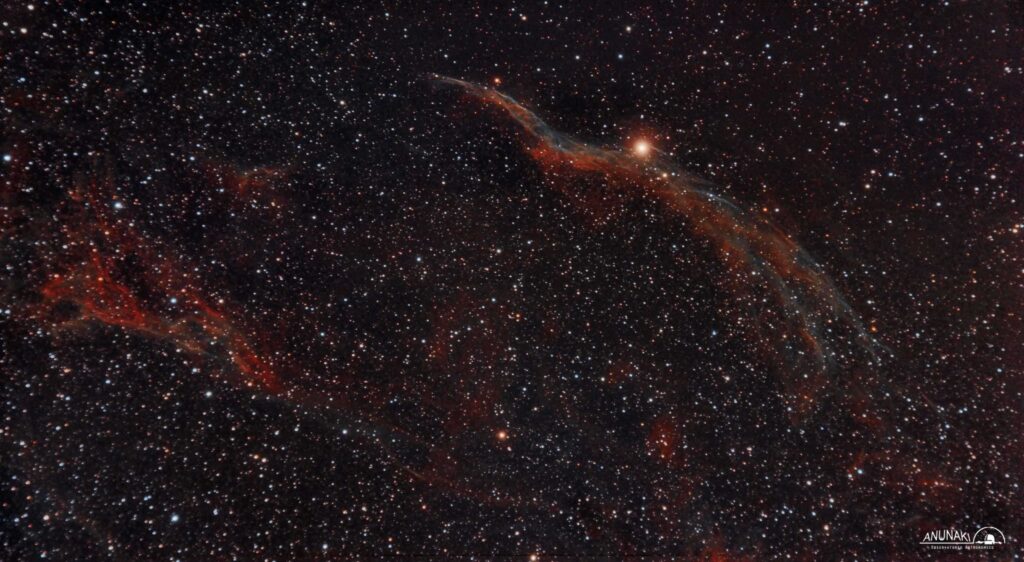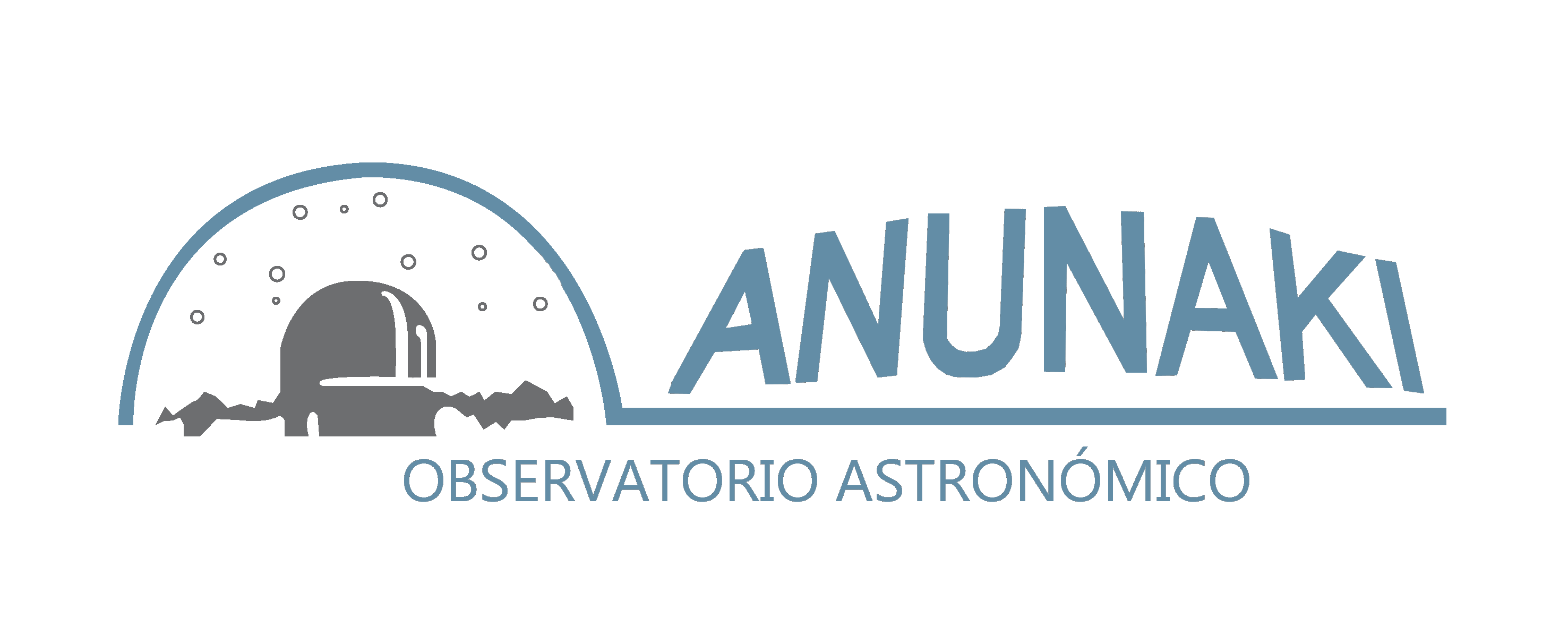The Veil Nebula is a cloud of hot, ionized gas. It is the visible part of the Cygnus Loop, also known as the W78 radio source, or Sharpless 103. It is a very extensive nebula and is usually divided into three large areas: The Eastern Veil: (Caldwell 34) which is located near the star 52 Cygni. The Western Veil (Caldwell 33), and the Pickering Triangle Wisp. It is the remnant of a relatively faint supernova in the constellation of the Swan.

Technical data:
Telescope: SkyWatcher ED80
Camera: Canon 40D
Focal Length Reducer: SW 0.8x
Telescope Guide: SW 60mm
Mount: LX200 GPSR
Guide CCD: QHY5
Location: Anunaki Observatory / Rivas Vaciamadrid (Madrid)
The supernova that gave rise to it exploded between 12,000 and 20,000 years ago,1 and the debris has since expanded to cover an area of about 3×3 degrees, about 6 times the diameter of the full moon. The distance to the nebula is not precisely known, but the Far Ultraviolet Spectroscopic Explorer (FUSE) estimates it at about 1470 light-years, although more direct measurements made by astrometric measurements seem to indicate a greater distance, of about 735 ± 25 Parsec1 or 2397 light-years. It was discovered on September 5, 1784 by William Herschel.
The Hubble Space Telescope captured images of the nebula. Analysis of nebula emissions appears to indicate the presence of oxygen, sulfur and hydrogen.
At higher resolution, some parts of the image appear as filaments. The standard explanation is that the shock waves are so thin, that the gas deposit is only visible when viewed exactly from edge, giving the deposit the appearance of a filament. Ripples on the surface of the structure lead to multiple filamentous images, which appear to be related to each other.

Technical data:
Telescope: SkyWatcher ED80
Camera: Canon 40D
Focal Length Reducer: SW 0.8x
Telescope Guide: SW 60mm
Mount: LX200 GPSR
Guide CCD: QHY5
Location: Anunaki Observatory / Rivas Vaciamadrid (Madrid)
The nebula is known among astronomers to be difficult to see visually, despite having a global magnitude of 7. However, with a telescope, using an O[III] filter (a filter insulating the wavelength of doubly ionized oxygen light), it will allow an observer to see the nebula clearly, as almost all of the light from this nebula is emitted at this wavelength. With an 8-inch (200 mm diameter) telescope equipped with an O[III] filter, it makes it easy to see the delicate fit seen in the photographs. This object is one of the largest and brightest X-ray emitters.
The brightest segments of the nebula are listed in the New General Catalogue (NGC) with the designations NGC 6960, 6979, 6992 and 6995. The easiest segment to find is 6960, which runs through the star 52 Cygni. NGC 6979 (the central part of the complex) is the Pickering Triangle. This segment of the nebula was discovered photographically by William Fleming, but credit was given to his supervisor (Edward Pickering) for which he was so named.
